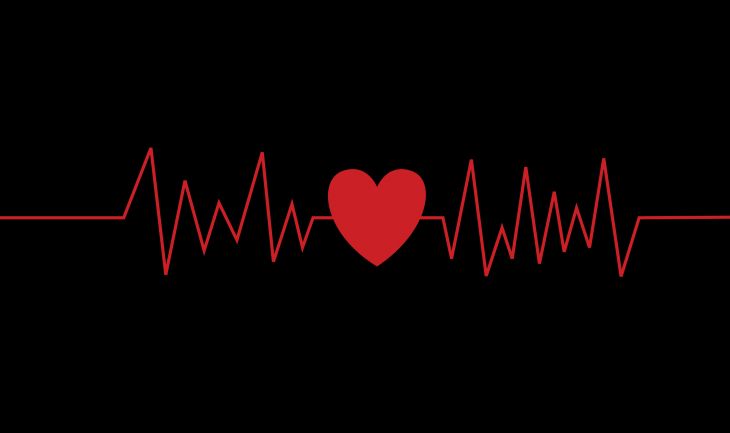One of the often-highlighted features of the new iteration of the Apple Watch is its ability to track your resting heart rate (I mentioned it in my own review of the device). Fitbit, Garmin, Samsung, and other tech brands also offer fitness trackers that measure your heart rate during exercise and keep tabs on your resting heart rate throughout the day.
We know that heart rate during exercise can show you how intensely you’re working—a higher heart rate means you’re putting greater demands on your cardiovascular system, and therefore, your heart is working really hard to pump blood quickly enough to meet those demands. The importance of resting heart rate is a little more vague, but this number can actually give you some insight into your fitness level and how it’s changing over time.
In addition, it could give your doctor information that, combined with other factors, may signal a heart problem.
Now, it’s important to first note that you should never rely on a fitness tracker to diagnose a potential heart condition. Only a doctor can make a diagnosis (don’t diagnose yourself based on what your tracker says). Trackers are not medical devices and the accuracy from tracker to tracker varies greatly. Wrist heart rate monitors can be used to glean insights into your stats, but are never a substitute for seeing a doctor and getting advanced screenings done if you are concerned that something might be wrong. That being said, these devices may be helpful in spotting overall trends and big picture changes (like if your HR is usually really low and now it’s been really high, plus you’ve felt a little dizzy or short of breath lately) that are worth talking to your doctor about more.
Your resting heart rate is a measure of how many times your heart beats per minute while at rest.
A resting heart rate between 60 and 100 beats per minute (BPM) is considered normal, but 60 to 80 is optimal, Nieca Goldberg, M.D., cardiologist and director of the Joan H. Tisch Center for Women’s Health at NYU Langone Health, tells SELF. Generally, a lower resting heart rate indicates more efficient heart function and greater cardiovascular health—and research has connected a higher resting HR with a higher risk of cardiac events like stroke and heart attack.
The best time of day to check your resting heart rate is right in the morning after you’ve woken up, George Welch, M.D., cardiologist at Manhattan Cardiology, tells SELF. “During the day, changes in your activity level, body position, emotional state, caffeine intake, and hydration levels all will affect your HR.”
Many factors influence what’s normal for any one person. Genetics, age, and gender all have an impact on your baseline HR and play a part in determining your normal range. Those aren’t really things that you can change, but there’s one factor you can: your fitness level.
Generally, a lower resting heart rate indicates a higher level of cardiovascular fitness.
“The more you exercise and the harder you train, the lower your resting heart rate,” Welch says. That’s why resting heart rate is often cited as a good measure of how fit a person is.
Greg Wells, Ph.D., assistant professor of kinesiology at the University of Toronto and author of The Ripple Effect: Eat, Sleep, Move and Think Better, tells SELF that a normal resting heart rate for an elite marathoner is more around 40 BPM. Or, for us non-Olympic athletes, Goldberg says that “instead of having a resting HR in the 70 to 80 range, with regular exercise you can get it into the 60s or below.” That’s thanks to the training effect that cardio exercise has on the heart.
When you exercise, your heart has to work really hard to pump enough blood to your lungs and muscles. When you subject it to this stress regularly over time, it slowly adapts (by actually growing and getting stronger) and eventually is able to pump enough blood with fewer beats. The same activities end up being less stressful, since your cardiovascular system is more prepared to handle them. This is the same reason why, when you do something like running, over time you’ll eventually be able to work at a higher intensity for longer (with your HR in a comfortable place) than when you first started.
At the same time, the more you train, the better your body gets at activating the parasympathetic nervous system. Here’s how it works: Exercise stimulates your sympathetic nervous system, or the “flight or fight” response, Wells says. Your parasympathetic nervous system counters it. “It’s your recovery and regeneration system that calms your body down. It relaxes your lungs, heart, blood vessels, digestion, and more,” Wells explains. When you train more and put your body under stress that stimulates the sympathetic system, your body gets better at flipping on the parasympathetic system to restore balance post-exercise. A more activated parasympathetic system contributes to a lower resting heart rate.
Wells notes that you’re likely to notice this adaptation in heart rate over the course of a few months. At first, it might actually increase, when your body is first put under new stress and hasn’t adapted yet. “So don’t be concerned if first month or two goes up. It will start creeping down.” When it comes to maintaining the effects, Wells says that as little as 20 minutes of cardiovascular exercise three times a week should do the trick.
If your resting heart rate increases or decreases drastically, it could be a sign that something’s abnormal—but it could also be something really minor.
“If HR spikes when you’re not active, it could be an indication of dehydration, overcaffeination, or that you’re developing a fever,” Dr. Welch says. “Throughout medical history, HR has been a very useful determinant of when something is going wrong.” Your heart rate also increases when you’re stressed, so if stress is a chronic issue, you might notice your resting HR is elevated.
High resting heart rate, called tachycardia, can also be a sign that something abnormal is going on that’s messing with the heart’s electrical signals and causing it to beat too fast. In some cases, it’s harmless. In others, leaving it untreated can be really dangerous, potentially leading to cardiac arrest, heart failure, or stroke. If your resting heart rate ever increases noticeably when you’re not exercising, and especially if it’s not an isolated incident, it’s worth checking in with your doctor.
If you’re not exercising regularly but notice your resting heart rate has been decreasing, that’s also a red flag. “Sometimes, people have issues with the conduction system of the heart. In particular for older people, when resting HR is below 50 we see that as a degenerative change in electrical conduction,” Dr. Welch says. “That’s uncommon for younger people, though.”
Dr. Goldberg says that a reduced resting HR could also be an indication of an underactive thyroid, but stresses that it’s important to think about how you feel. “Don’t just look at the number. If your HR looks unusually low but you don’t feel lightheaded, weak, short of breath, dizzy, or like you’re going to faint, then calm down.” Chances are, you’re fine—but again, always bring it up to your doctor to make sure.
Using a fitness tracker to keep tabs on your resting heart rate can help you spot deviations from your norm. But remember that it’s not a medical device.
Dr. Welch says that trackers can give a patient good insight into their personal health and fitness levels, but that the findings should be “taken with a grain of salt.” He says, “It’s a useful tool, but probably once a week I see someone who’s overly obsessed with their biometric data, so on occasion I’ve had to suggest people take off their Fitbit and not wear it because it was really weighing heavily on them.”
Both Drs. Welch and Goldberg think that wearables can be a good addition to a person’s overall care and provide additional insight into any trends. But that’s what they should be used for—noticing trends, not obsessing over specific numbers. These watches are not medical devices and their accuracy can greatly vary. “It’s really the trend that matters, not if your HR is varying a little bit after a cup of coffee.”
“If you’re concerned about some of the findings, don’t keep it a secret. Share it with your health care provider,” Dr. Goldberg says. “When my patients share it with me, I think of it as just added info for their medical history.”





